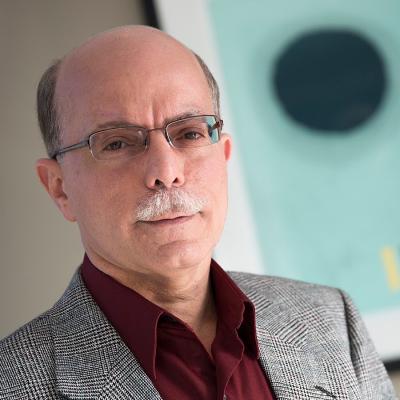$1.47 million grant funds new Ohio State research on extremism

Could persuading people to brush their teeth more hold the key to preventing insurrection?
From abortion clinic bombings to violent protests and coup attempts, extremism has played a historic and increasingly common role in American society. However, principles that scientists have long used to study everyday human behaviors and attitudes may help illuminate, and mitigate, its rise.
This idea animates a new research project led by Richard Petty, Distinguished University Professor in The Ohio State University Department of Psychology, and funded by a recent $1.47 million grant from the Templeton World Charity Foundation. Over a three-year period, Petty’s work will draw on the expertise of Ohio State’s social psychology doctoral program to shed new light on the polarization and violence that have become hallmarks of the 21st century, as well as some of its greatest challenges. It will also be one of the first projects facilitated by the university’s new Collaborative on the Science of Polarization and Misinformation (C-SPAM), an interdisciplinary research initiative housed in the College of Arts and Sciences.

“The enhanced willingness of people to engage in or support extreme actions has the potential to undermine democracies around the globe,” Petty said. “Examining this issue through a social psychological lens will help highlight the common causes of these behaviors and suggest common solutions.”
Social psychologists have long studied human attitudes, behaviors and the correlation between the two, Petty explained, but most of this research has centered on issues that might seem vanilla by today’s standards, such as smoking, the use of seatbelts and even dental hygiene habits. About four years ago, he and his students began to wonder if similar principles could be applied to the extreme scenarios that increasingly made headlines.
Their most direct inspiration came from the COVID-19 pandemic, when airline passengers started throwing punches over in-flight masking requirements.
“Whoa, like, that’s an extreme kind of reaction to being asked to wear a mask!” Petty said, recalling his response when he first heard about the assaults. “Who are these people, are they the same people who support political violence and other sorts of extreme actions, and are the same psychological processes involved?”
Petty and several doctoral students, including Nancy Mengran Xu and Joseph Siev, began preliminary research in 2020. Xu and Siev have since graduated and accepted academic appointments at Fudan University in Shanghai and the University of Virginia in Charlottesville, respectively, but will continue to assist Petty with work funded by the Templeton grant, which officially began Sept. 1. As the project progresses, the initial team will expand on its pandemic-era findings and methodology with several postdoctoral fellows and current Ohio State psychology graduate student Brett Burton.
A nuanced look at attitudes
As part of their work, Petty and his team are examining factors that can help predict whether someone engages in extreme acts, including attitude strength, a pillar of social psychology research that refers to how entrenched a person’s beliefs are and the extent to which these guide behavior. People with “strong” attitudes are more likely to behave in ways that support their views.
Part of what makes an attitude strong is how extreme it is: Scientists have long understood that people’s beliefs about an issue can fall on a spectrum (for example, from staunch opposition to fossil fuel extraction to “Drill, baby, drill!”, with more moderate views in between), and that individuals at either end are most likely to act out. But there are other considerations, too, such as how committed people feel to what they believe, or how certain they are that their position is right (even an extreme opponent of oil drilling might see some economic merit in the practice).
In their initial studies, Petty and his team found something surprising: The less sure participants with extreme views felt about their position, the more likely they were to condone violent, extremist acts – such as blowing up an oil pipeline, or punching a flight attendant in response to mask mandates. This outcome held up across a wide variety of topics.
“The people who are most willing to go to extremes in support of their beliefs are often not the ones with the most clarity, conviction and genuine commitment to their cause,” explained Siev.
Duane Wegener, chair of the Department of Psychology, said these early results were among the most exciting he has encountered in the field, noting that more than 50 years of prior research suggested certainty is often what motivates people to act. “It is fascinating that the exact opposite – doubt in one’s attitude – can foster support for the most consequential of behaviors,” he said.
As the team continues to study attitude strength with support from the Templeton grant, researchers hope to develop a clearer understanding not only of who supports and engages in extreme behavior, but why. Petty said he has an initial theory: People who aren’t sure of their extreme views on an issue feel they have something to prove.
“It is very disconcerting for you not to be sure of an important belief,” he explained. “People look for some way to alleviate that discomfort. One way to do that is to signal how strong you really are, to justify it by saying extreme behavior is warranted.”
Persuasion as a two-way street
The project will also explore methods for influencing people with strong attitudes. During their initial work, members of Petty’s team experimented with longstanding persuasive techniques, including one- and two-sided messaging.
Traditional wisdom holds that people are most likely to be swayed by communications that clearly present one side of an issue, Petty said: for example, “Brush your teeth twice a day or you will develop cavities and gingivitis.” But in preliminary studies, he and his team observed a different trend among people with extreme, confidently held views: They tended to be more affected by statements that acknowledged valid points about both their own perspectives and opposing ones. So far, this approach has been as effective around mundane topics as it has around more polarizing ones, like face masks and election fraud.
“It makes sense, if you think about it, because if you’re totally sure your position is right, you appreciate it when someone acknowledges something about your own position,” Petty said. “If you acknowledge something valid about my position, I’m open to acknowledging something valid about yours.”
Xu, whose work with Petty concentrated on these persuasive methods, was optimistic about what the team’s initial findings could mean for diffusing extremism. “It is important to discover ways to encourage more openness and understanding of those who hold different viewpoints,” she said. “Openness in people creates opportunity and motivation to seek contrary information, which makes attitude change possible.”
A third focus of the project is the impact of extreme messages, an area Petty’s team has not yet explored in depth. Toward the conclusion of the grant, researchers intend to use results from their survey research to conduct in-depth interviews with community members who hold extreme beliefs, with the eventual goal of developing interventions, Petty said.
Breaking new ground by building on tradition
While Petty and his team are hardly alone in researching extremism, what sets their work apart is the use of principles shaped and refined through 60 years of social psychological research on attitudes and persuasion at Ohio State. Petty himself, along with professors Wegener and Russell Fazio, are widely considered some of the preeminent experts in the world on these topics. Fazio, whose current research focuses on methods for debunking belief in conspiracy theories, and Wegener, who collaborates with scholars across departments on approaches to combatting misinformation, are also key affiliates of C-SPAM, which launched in autumn 2024 with a gift from Emeritus Professor Gifford Weary and her family foundation.
Studies have recently proliferated about granular instances of extremism and misinformation – about climate change denialism, anti-vaccination movements or political conspiracy theories, for example – but Ohio State has a rich tradition of looking at the bigger picture, including the psychological processes that are common across these different realms, Petty said. As a result, the university is poised to make a significant impact.
“I think we can bring that extensive knowledge and apply it to these new phenomena in a way that might be richer and deeper than people who are researching this for the first time,” he said.
“We might have traditionally studied tooth-brushing or persuasion in the courtroom, but not because we’re really interested in these topics. Whatever ways you can change people’s attitudes about brushing their teeth might also work with other kinds of issues. We aim to find out.”

